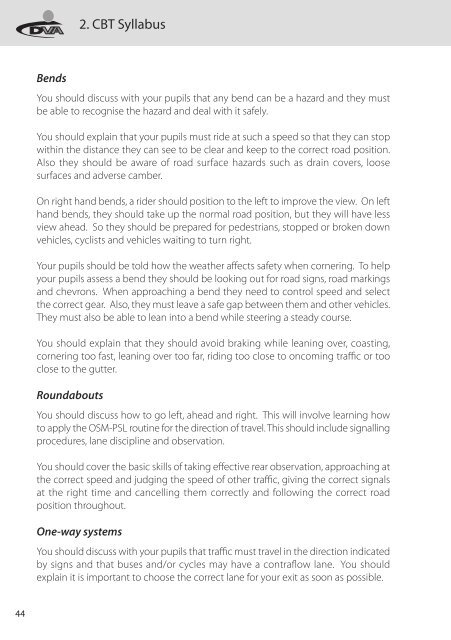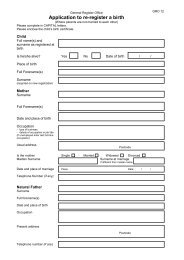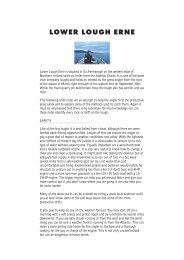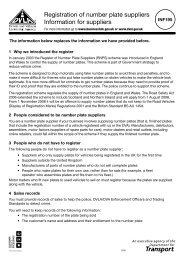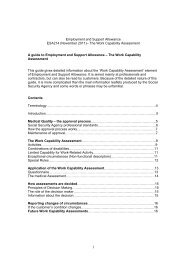an instructors guide to delivering compulsory basic training - NIDirect
an instructors guide to delivering compulsory basic training - NIDirect
an instructors guide to delivering compulsory basic training - NIDirect
You also want an ePaper? Increase the reach of your titles
YUMPU automatically turns print PDFs into web optimized ePapers that Google loves.
44<br />
Bends<br />
You should discuss with your pupils that <strong>an</strong>y bend c<strong>an</strong> be a hazard <strong>an</strong>d they must<br />
be able <strong>to</strong> recognise the hazard <strong>an</strong>d deal with it safely.<br />
You should explain that your pupils must ride at such a speed so that they c<strong>an</strong> s<strong>to</strong>p<br />
within the dist<strong>an</strong>ce they c<strong>an</strong> see <strong>to</strong> be clear <strong>an</strong>d keep <strong>to</strong> the correct road position.<br />
Also they should be aware of road surface hazards such as drain covers, loose<br />
surfaces <strong>an</strong>d adverse camber.<br />
On right h<strong>an</strong>d bends, a rider should position <strong>to</strong> the left <strong>to</strong> improve the view. On left<br />
h<strong>an</strong>d bends, they should take up the normal road position, but they will have less<br />
view ahead. So they should be prepared for pedestri<strong>an</strong>s, s<strong>to</strong>pped or broken down<br />
vehicles, cyclists <strong>an</strong>d vehicles waiting <strong>to</strong> turn right.<br />
Your pupils should be <strong>to</strong>ld how the weather affects safety when cornering. To help<br />
your pupils assess a bend they should be looking out for road signs, road markings<br />
<strong>an</strong>d chevrons. When approaching a bend they need <strong>to</strong> control speed <strong>an</strong>d select<br />
the correct gear. Also, they must leave a safe gap between them <strong>an</strong>d other vehicles.<br />
They must also be able <strong>to</strong> le<strong>an</strong> in<strong>to</strong> a bend while steering a steady course.<br />
You should explain that they should avoid braking while le<strong>an</strong>ing over, coasting,<br />
cornering <strong>to</strong>o fast, le<strong>an</strong>ing over <strong>to</strong>o far, riding <strong>to</strong>o close <strong>to</strong> oncoming traffic or <strong>to</strong>o<br />
close <strong>to</strong> the gutter.<br />
Roundabouts<br />
2. CBT Syllabus<br />
You should discuss how <strong>to</strong> go left, ahead <strong>an</strong>d right. This will involve learning how<br />
<strong>to</strong> apply the OSM-PSL routine for the direction of travel. This should include signalling<br />
procedures, l<strong>an</strong>e discipline <strong>an</strong>d observation.<br />
You should cover the <strong>basic</strong> skills of taking effective rear observation, approaching at<br />
the correct speed <strong>an</strong>d judging the speed of other traffic, giving the correct signals<br />
at the right time <strong>an</strong>d c<strong>an</strong>celling them correctly <strong>an</strong>d following the correct road<br />
position throughout.<br />
One-way systems<br />
You should discuss with your pupils that traffic must travel in the direction indicated<br />
by signs <strong>an</strong>d that buses <strong>an</strong>d/or cycles may have a contraflow l<strong>an</strong>e. You should<br />
explain it is import<strong>an</strong>t <strong>to</strong> choose the correct l<strong>an</strong>e for your exit as soon as possible.


